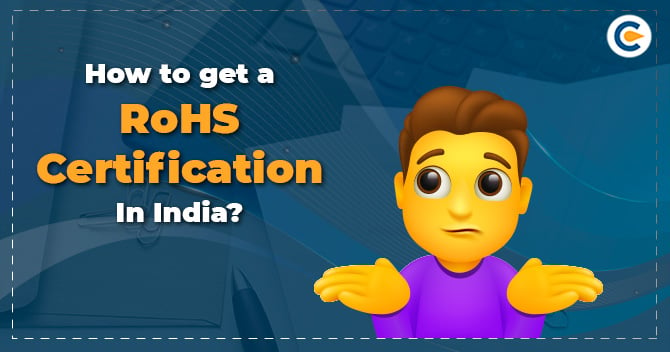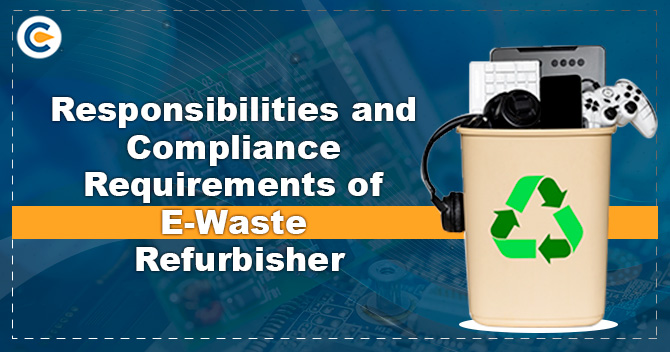Since the inception of the 21st Century, electronic waste and chemicals have become more general. However, no one was aware of its harmful effects and how its needless exposure was dangerous to human health and the environment. Consequently, millions of people have developed health problems, and the use of hazardous substances gave birth to the Restriction of Hazardous Substance in Feb 2003 by European Union. In this article, we will pen down what is RoHS ? and how to get the RoHS compliance certificate under E-waste Management.
What is RoHS?
RoHS is an abbreviated term for Restriction of Hazardous Substances and is also known as the Directive 2002/95/EC. It is derived directly from the European Union and is created solely to restrict the implementation of some hazardous substances found in most electrical and electronic products.
The directives relevant to Restriction of Hazardous Substances took effect on July 1, 2006, and were essential to be administered and become law in each member state. RoHS helps in restricting certain hazardous substances in electrical and electronic equipment. This initiative aims to bring down the use of harmful substances and bring down the environmental effect and health impacts of electronics.
Companies affected by RoHS Directives-
If a company is using the restricted materials and sells-
- Applicable electronic devices,
- Sub-assemblies, or
- Components directly to EU nations or sold to resellers, distributors, or integrators who then sell to EU countries are affected by RoHS directives.
Since RoHS-like regulations have expanded to several other countries, this does not only apply to EU countries. RoHS also encompasses metal industry for any use of metal plating, anodizing, chromatin or other finishes on Electrical and Electronics Engineering components, heatsinks, or connectors.
Role of RoHS Certification in E-waste
In India, the use of electronic products is expanding widely, due to which the environment and health of humans are in danger. Additionally, fast-evolving technologies encourage consumers to get rid of electronic devices quickly, resulting in a high increase in the amount of electronic trash. Considering the harmful effects of electronic waste, The Ministry of Environment and Forest (MoEF[1]) and the Government of India implemented the RoHS.
The companies working in electronic devices and dealing with such substances shall obtain the RoHS Certification. It is vital to choose a company that takes RoHS certification sincerely and can provide its client ISO9001 certification for a RoHS-compliant manufacturing facility.
Steps required for RoHS Certification
The following steps are required for RoHS certification.
1. Testing is done either on-site or XRF testing or lab phthalate solvent extraction testing to determine the values of the ten restricted RoHS substances.
2. Procedure Audit- Inspect all applicable manufacturing processes used towards RoHS compliance on-site.
3. Reviewal of particular documents: Review of documents is a crucial step to getting the RoHS certification. Documents like-
- Bill of Materials,
- Technical File,
- Assembly drawings,
- Materials declarations,
- Test reports, and
- Specification/compliance certificates from all suppliers.
Apart from reviewing the documents, the Technical File must contain the following:
- Generic product description and information related to design structure.
- Risk evaluation of materials, segments, and subassemblies.
- Observations on materials, parts, and subassemblies.
- Documentation related to manufacturing and records of
- Systematize standards, specifications, and compliance procedures.
- 4. Grant of Certification-After the successful audit and documentation review, a RoHS Certification is an issue. The RoHS Certification acts as a Certificate of Conformity, and the RoHS Certification remains valid for 5 years.
Substance prohibited under RoHS Certification
Below -mentioned substances are prohibited under RoHS Certification-
- Hexavalent Chromium
- Cadmium
- Mercury
- Lead
- Polybrominated Diphenyl Ethers
- Polybrominated Biphenyls
Products Exempted under RoHS Certification
Products mentioned below are exempted under RoHS Certification.
- Military and National Defense products
- Batteries
- Radioactive waste
- Products that do not depend on electricity as their major source of energy
- Products whose main function does not require the use of electricity.
- Component of an exempted product category
- Products that encourage micro, small, and medium-sized manufacturing and service firms, as defined by the MSMEs Development Act of 2006.
Relatability of RoHS and WEEE
RoHS stands for Restriction of Hazardous Substance, and WEEE stands for Waste electrical and electronic equipment directive. Both the directives are mostly applied to the same products, but each has its own rules, which are different for different countries.
WEEE, also termed Directive 2002/96/EC, directs the treatment, recovery, and recycling of electric and electronic equipment. After August 13, 2006, all applicable products in the EU market must pass WEEE compliance and carry the Wheelie Bin sticker. It aims to uplift the design of electronic products with environmentally-safe recycling and recovery in mind. If we talk about RoHS, the related compliance harmonizes into WEEE by reducing the number of hazardous chemicals used in electronics manufacture.
Also, RoHS regulates the hazardous substances used to manufacture electrical and electronic equipment, while WEEE regulates the disposal of the same equipment.
Execution of RoHS Certification in Industries
For RoHS execution in Industries, analyze the below-mentioned steps-
- Identification of risk in the process chain
- Examining each stage of operations
- Keep a check on operations going wrong
- Put an end to the causes to reduce risk
- Reviewing the process
- Employee Participation
- Evaluating the system for effectiveness
- Take proper action for non-compliance
Conclusion-
In a nutshell, RoHS Certification is there for our safety. As we cannot predict the harmful threat from substances such as lead and beryllium oxide, as the complexity with such chemicals is their long-term exposure. So, it is essential to validate that all the producers producing electronic goods shall ensure that the equipment shall not contain 10 substances prohibited under RoHS.
Read our Article:Obligations for E-waste Recyclers and Dismantlers under E-waste management rules











